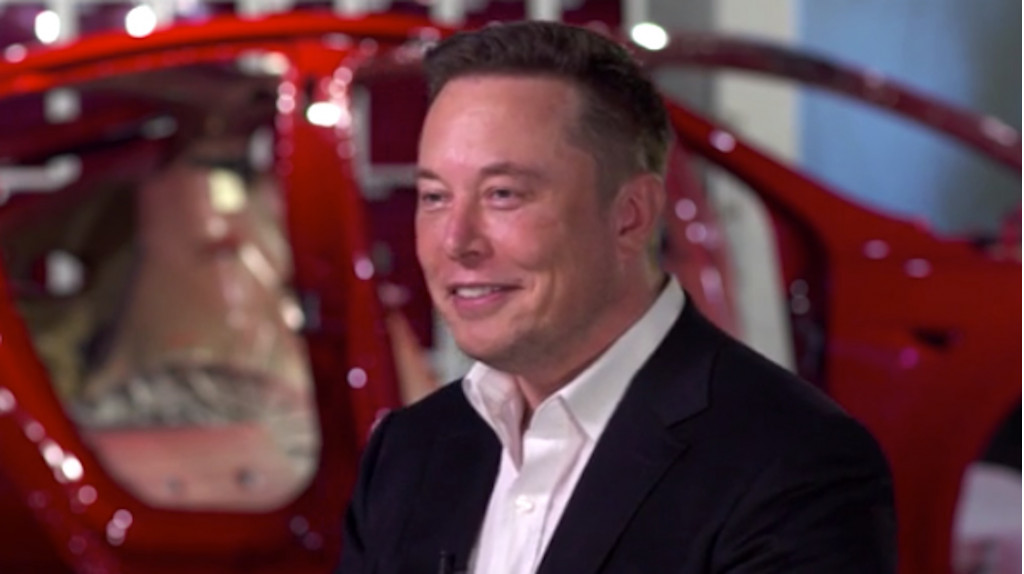Tesla's earnings call on Wednesday showed the company making money—but struggling to keep doing so.
Based Tesla's financial reports as well as its recent moves to restructure its model lineup and cut prices in response to a cut in federal tax credits for its buyers, there are a few things that must keep CEO Elon Musk up at night:
The company is churning to outrace a perfect storm of higher effective prices for its buyers brought on by the reduction in tax credits, higher-than-anticipated production costs, and lower-than-anticipated volume brought on by the company's admitted missteps in setting up its Model 3 assembly line.
DON'T MISS: Tesla turned a profit at the end of 2018; Model Y coming by end of 2020
In response to delays, the company famously ripped out some automated equipment on the Model 3's original assembly line and replaced it with (more expensive) humans, and built an additional, less automated assembly line in a tent outside the factory. All this costs more money than Tesla originally budgeted to produce the Model 3, and still hampers the volume the company originally planned.
When asked about the long-awaited entry-level $35,000 Model 3, Musk has repeatedly said that the company needs five to six months of "full production" of the Model 3 before it can afford to sell the car for so little money and remain afloat financially. In multiple earnings calls, he has also defined "full production" as building 5,000 Model 3s per week. In the midst of the struggle to boost production enough to make the base Model 3 profitable, Musk then upped that number to 6,000 per week.
CHECK OUT: Tesla Model Y coming in 2020; Roadster and Semi still on the way, says Musk
Despite doubling its production and selling 170,000 cars in the second half of the year, Model 3 production from July through December averaged out to about 4,700 cars per week, so it's not clear how soon Musk thinks it may be realistic to produce a $35,000 Model 3.
In the meantime, the company has focused on selling better-equipped, higher priced versions of the Model 3—where it can make bigger profits—in the U.S.
READ THIS: Tesla breaks ground on China factory for Model 3 and Model Y
For now, the primary engine pushing Tesla ahead of the oncoming storm seems to be the new Gigafactory 3 in Shanghai, where the company broke ground last month, according to Musk's comments in Wednesday's earnings call. Musk said he anticipates lower labor and materials costs for the Model 3 there, and that Tesla plans to produce 3,000 Model 3s in China by the end of the year. The company plans to build 500,000 cars there after the factory is finished, including base versions of the Model 3 and the upcoming Model Y SUV. If the company can produce the Model 3 at a lower cost, it could make the entry-level car profitable—at least in Asia.

Tesla CEO Elon Musk on
The second engine roaring to outrun the storm is Tesla's burgeoning effort to sell Model 3s to Europe and China. Musk said Wednesday that all Model 3s produced in January were destined for Europe. European versions of the car have a different charge plug compatible with the CCS (Combo) standard, in the European pin configuration, rather than Tesla's proprietary charge plug as the cars still have in the U.S. The Model 3 is scheduled to go on sale there this month, and Model 3s exported from the U.S. are planned to go on sale in China in March.
READ MORE: Tesla cuts prices $2,000, almost hit 250,000 vehicles in 2018
With no new Model 3s having been built for the U.S. in a month, it could imply that Tesla sees its inventory of the Model 3 Mid Range and Long Range Dual Motor versions to be sufficient to satisfy demand in the U.S. for at least a month or two.
Before it launched the Model 3, Tesla reported that it had more than 400,000 deposits for the car. Now that it has sold a total of about 185,000, that inventory has built up, indicating that perhaps half of those reservation holders have not converted to orders—even those who have not asked for their money back. (In answer to a question Wednesday, Musk allowed that the company still holds some of those reservations.)
The most likely explanation is that many of those potential buyers are waiting for a more affordable model—or at least a version that Tesla doesn't currently offer.
In order to maintain profits and pay down the debts it incurred developing the three models it sells so far, the company either has to find a way to sell more of the highly-equipped, high-profit Model 3s it currently builds—for example by exporting them to new markets—or bring costs down to the point that it can afford to sell cheaper models. At the moment, it looks like that's quite a storm for Tesla to outrun.












